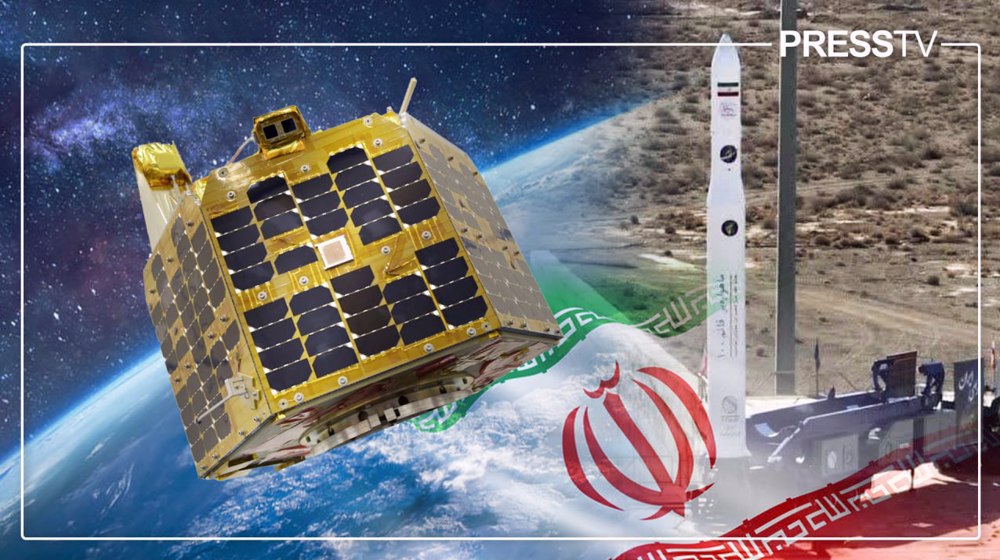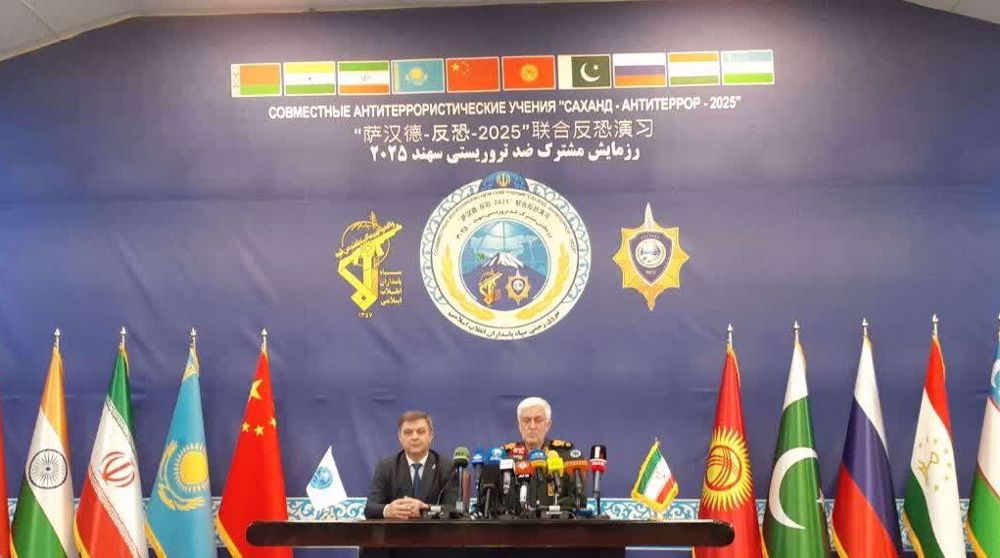Explainer: What does launch of Chamran-1 satellite mean for Iran's space program?
By Ivan Kesic
Early on Saturday, the Islamic Republic of Iran successfully launched its domestically-developed Chamran-1 satellite into space, marking another glorious scientific feat.
The launch of Chamran-1 through Qaim-100 satellite carrier is part of the country's commitment to take rapid strides in its space program and showcase the reliability of its new series of solid-fuel carrier rockets.
The launch was announced by Brigadier General Amir Ali Hajizadeh, commander of the Islamic Revolution Guards Corps (IRGC) Aerospace Force, during an event attended by officers, families of martyrs, students, and professors.
It is the fifth Iranian satellite launched this year, following the Soraya, Mahda, Keyhan-2, and Hatef-1 satellites, all of which were launched in January.
Hassan Salarieh, head of the Iranian Space Organization (ISO), said the research satellite will be used to test the performance of satellite subsystems and satellite control in terms of orbital correction and orbit change.
An important steps toward achieving satellite constellations is the capability of orbital maneuvering, with phase changes and orbital inclination adjustments, both of which are of great significance, he noted, adding that Chamran-1 satellite is "one of the first research satellites for such tests."
What is the Chamran-1 satellite?
The Chamran-1 is a 60-kilogram research satellite, shaped as a hexagonal prism with a diameter of 900 mm, equipped with solar panels on its sides and a cold gas propulsion system.
It was designed and manufactured by Iranian technicians at the space division of Iran Electronics Industries (SAIran), a state-owned subsidiary of the Ministry of Defense, in collaboration with the Aerospace Research Institute (ARI) and private knowledge-based firm.
The satellite features an integrated Telemetry, Tracking, and Command (TT&C) transceiver that allows two-way radio communication with ground stations via very high frequency (VHF) and ultra-high frequency (UHF) bands.
It was launched by the three-stage Qaem-100 carrier rocket from the Shahrud Site in Iran’s central Semnan province on Saturday.
The satellite orbits in low Earth orbit (LEO) at an apogee (maximum altitude) of 550 km and a speed of 7.5 km/s. The first telemetry data were received shortly after launch.
🇮🇷 Iran reaches a new significant milestone by successfully launching its research satellite, Chamran 1, and positioning it in orbit 550 kilometers above the Earth. pic.twitter.com/uJ3KmWbfAv
— Press TV 🔻 (@PressTV) September 14, 2024
The Chamran-1’s primary mission is to test hardware and software systems for validating orbital maneuver technology.
Secondary tasks include evaluating the performance of the cold gas propulsion subsystem in space and assessing the navigation and attitude control subsystems.
What is the Qaem-100 carrier rocket?
The Qaem-100 is the IRGC's latest carrier rocket, based on the older Qased model, which has successfully launched Nour-class satellites three times in the recent past.
Unlike the Qased, which uses liquid fuel for its first stage, the Qaem-100 is entirely powered by solid fuel across all three stages.
The Qaem-100 is also more technologically advanced, with an apogee of 750 km, compared to the Qased's 500 km, and it can carry twice the payload capacity.
The rocket’s first-stage engine, Rafe, was successfully tested nearly three years ago and has a thrust of 68,000 kg, significantly higher than older models that had 30,000 kg of thrust.
In November 2022 and March 2023, two test launches were conducted—one suborbital and one orbital—with the Nahid communications satellite.
In January 2024, the Qaem-100 successfully launched the 50-kilogram indigenous Soraya satellite, reaching a national record altitude of 750 km.
The Qaem-100 is part of a broader development plan that includes more advanced models, such as the Qaem-105, Qaem-110, and Qaem-120.
The Qaem-105, Iran’s first four-stage satellite carrier, will have twice the payload capacity of the Qaem-100 and enable the country to send heavier satellites into higher orbits.
The most advanced models are expected to launch satellites into geostationary orbit at 36,000 km.
What were reactions of Iranian officials?
IRGC chief Major General Hossein Salami praised the successful launch of the research satellite, crediting it to cooperation between the IRGC and the Iranian government in enhancing national prestige.
He emphasized that the collaborative efforts of Iran Electronics Industries, the Aerospace Research Institute, and domestic knowledge-based companies underscore the nation's determination to excel in emerging technologies amid global competition.
The top general further asserted that this achievement, achieved in the face of illegal Western sanctions, reflects the vision and leadership of the Leader of the Islamic Revolution Ayatollah Seyyed Ali Khamenei.
He also commended scientists, experts, and decision-makers in the Ministry of Defense and Armed Forces Logistics and the Ministry of Communications and Information Technologies for their contribution to these projects.
Experts believe the successful launch of the Chamran-1 satellite is a major milestone for Iran’s space program, marking progress in both satellite technology and the development of solid-fuel carrier rockets.
Trump admin. asks transportation body to share passenger names in expanded deportation push: Report
UN sounds alarm over record Palestinian displacement, surge in illegal settler attacks in West Bank
Iran emerges as global fertility hub, blending innovation, research and scientific excellence
VIDEO | Can Europe save Ukraine?
VIDEO | EU freezes Russian assets
Iran’s PMI slips 0.8 points to 49.8 in November: ICCIMA
Two US soldiers, interpreter killed in surprise attack in Syria: CENTCOM
VIDEO | Epstein in Africa










 This makes it easy to access the Press TV website
This makes it easy to access the Press TV website